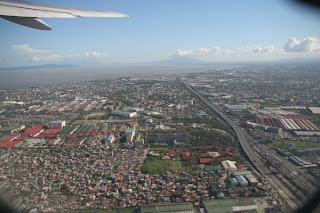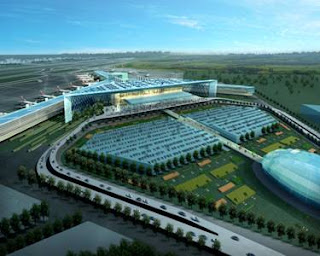Islamabad
Islamabad is located in the Pothohar Plateau in the north of the country, within the Islamabad Capital Territory. The region has historically been a part of the crossroads of Punjab and Khyber Pakhtunkhwa with Margalla pass acting as the gateway between the two regions.[6] The city was built during the 1960s to replace Karachi as Pakistan's capital.
Islamabad is a well-organized city divided into different sectors and zones. It was ranked as a Gamma world city in 2008.[7] The city is home to Faisal Mosque, the largest mosque in South Asia and the sixth largest mosque in the world.
Islamabad has the highest literacy rate in Pakistan[8] and is home to the some of the top ranked universities in Pakistan, including Quaid-i-Azam University, Pakistan Institute of Engineering & Applied Sciences and the National University of Sciences and Technology.[9] Allama Iqbal Open University in Islamabad is one of the world's largest universities by enrollment.
History
Early history
Islamabad Capital Territory, located on the Pothohar Plateau, is regarded to be one of the earliest sites of human settlement in Asia.[11] Some of the earliest Stone Age artifacts in the world have been found on the plateau, dating from 100,000 to 500,000 years ago. The crude stones recovered from the terraces of the Soan River testify to the endeavours of early man in the inter-glacial period.[12] Items of pottery and utensils dating back to prehistory have been found.[13]Excavations have revealed evidence of a prehistoric culture. Relics and human skulls have been found dating back to 5000 BC that show this region was home to Neolithic people who settled on the banks of the Swaan River.[11] The Neolithic people developed small communities in the region at around 3000 BC.[12][14] A Buddhist town once existed in the region.[15]
Situated at one end of the Indus Valley Civilization, the area was the first habitation of the Aryan community in Central Asia.[11] Their civilization flourished here between the 23rd and 18th centuries BC. Many great armies such as those of Alexander the Great, Genghis Khan, Timur and Ahmad Shah Durrani used the corridor through Islamabad on their way to invade the Indian Subcontinent.[11] Modern Islamabad is based on the old settlement known as Saidpur. The British took control of the region from the Sikhs in 1849 and built Asia's largest cantonment in the region.
Construction and Development
When Pakistan gained independence in 1947, Karachi was its first capital. In 1960, Islamabad was constructed as a forward capital for several reasons. Traditionally, development in Pakistan was focused on the colonial centre of Karachi, and President Ayub Khan wanted it to be equally distributed. Moreover, Karachi was located at one end of the country, making it vulnerable to attacks from the Arabian Sea. A capital which was easily accessible from all parts of the country was needed. The newly selected location of Islamabad was closer to army headquarters in Rawalpindi and the disputed territory of Kashmir in the North.[11]
In 1958, a commission was constituted to select a suitable site for the national capital with particular emphasis on location, climate, logistics, and defence requirements along with other attributes. After extensive study, research, and a thorough review of potential sites, the commission recommended the area northeast of Rawalpindi. A Greek firm of architects, Konstantinos Apostolos Doxiadis, designed the master plan of the city which was based on a grid plan and triangular in shape, with its apex towards the Margalla Hills.[16] The capital was not moved directly from Karachi to Islamabad; it was first shifted temporarily to Rawalpindi and then to Islamabad when the development was completed.
President House
The president house in Islamabad is located in Pakistan, president house is in the center of Islamabad, Pakistan's president Asif Ali Zardari live there in these days. It has very unique and amazing staff. Many Galleries, Rooms, halls and criteria as well. All the ministers of Pakistan's government enjoy it benefits.
PRIME MINSTRE HOUSE ISLAMABAD
MAP OF ISLAMABAD
PARLIMENT HOUSE ISLAMABAD
SERENA HOTEL ISLAMABAD




















Nice post i really appreciate your blog and i would like to say i am taking flights to Islamabad with my family kindly suggest me any stunning place to visit.
ReplyDeleteNice post i really appreciate your blog and i would like to say i am taking Allama Iqbal Open University with my family kindly suggest me any stunning place to visit.
ReplyDeleteIslamabad, the scenic and extraordinarily beautiful capital of Pakistan is known for its natural beauty, state-of-the-art infrastructure, peaceful environment, beautiful places to visit and of course, classy outdoor and indoor cafes.
ReplyDelete